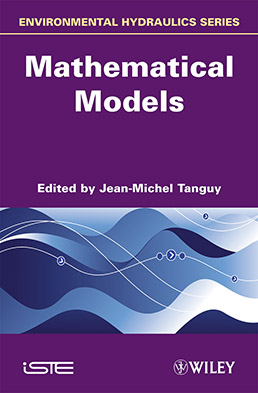
The study and management of water resources – especially the quantitative approach taken through the science of hydraulics and hydrology – is becoming increasingly important as those resources are affected by increasing population and development, the demands and consumption of industry, pollution, and climate change. Since the existence of water in the environment is also related to the role it plays in many other processes – from weather phenomena and climate, including heat transport in the atmosphere and oceans, to shaping the physical geography and geology of the landscape of rivers, plains, and coastal regions through erosion and deposition – this is a complex and interrelated field relating ecosystems, geography, climate, and planning and development among other topics.
This series of five volumes focused on environmental hydraulics studies the complete water (or hydrologic) cycle from meteorology to coastal morpho-dynamics, including looking at river hydraulics, hydrogeology and marine hydraulics. It describes these physical processes, and how they are observed in the real world, from catchment basins or watersheds where precipitation first falls, all the way through the transport of water to the sea. An inventory of ground measurement instruments, which provide necessary input data for the various modeling tools described in the book, is drawn up, and mathematical models describing each field within the overall subject area are detailed by a series of system equations. These are then solved by the use of numerical methods adapted to the particular characteristics of the application in question.
Many of the key modeling tools used by engineers in practice in the field are described in detail, as well as numerous examples of the application of the methods to real world problems, presented as case studies that highlight all of the processes described above.
Volume 2 presents various existing theories used by the different scientific disciplines to represent these processes in an integrated approach, providing mathematical models as well as conceptual ones,
1. Reminders on the Mechanical Properties of Fluids, Jacques George.
2. 3D Navier-Stokes Equations, Véronique Ducrocq.
3. Models of the Atmosphere, Jean Coiffier.
4. Hydrogeologic Models, Dominique Thiéry.
5. Fluvial and Maritime Currentology Models, Jean-Michel Tanguy.
6. Urban Hydrology Models, Bernard Chocat.
7. Tidal Model and Tide Streams, Bernard Simon.
8. Wave Generation and Coastal Current Models, Jean-Michel Tanguy, Jean-Michel Lefèvre and Philippe Sergent.
9. Solid Transport Models and Evolution of the Seabed, Benoît Le Guennec and Jean-Michel Tanguy.
10. Oil Spill Models, Pierre Daniel.
11. Conceptual, Empirical and Other Models, Christelle Alot and Florence Habets.
12. Reservoir Models in Hydrology, Patrick Fourmigué and Patrick Arnaud.
13. Reservoir Models in Hydrogeology, Dominique Thiéry.
14. Artificial Neural Network Models, Anne Johannet.
15. Model Coupling, Rachid Ababou, Denis Dartus and Jean-Michel Tanguy.
16. A Set of Hydrological Models, Charles Perrin, Claude Michel and Vasken Andréassian.
Jean-Michel Tanguy is a French civil engineer who passed a master degree in Ice Hydraulics and a PhD in River Sediment Transport Modeling at Laval University, Quebec.